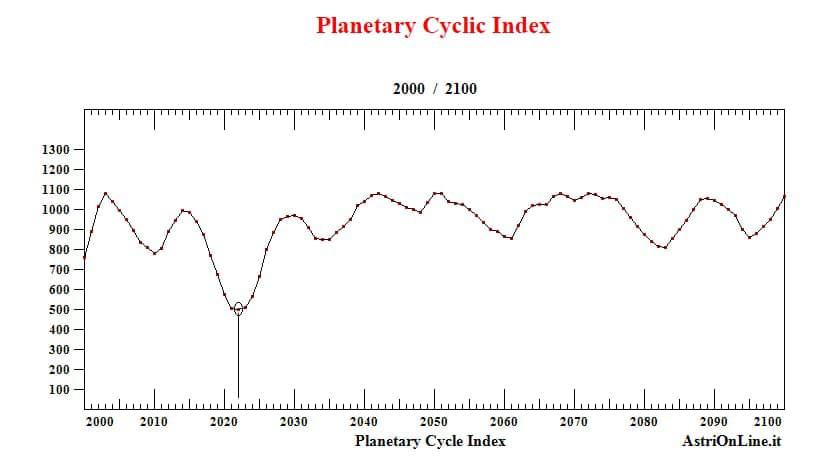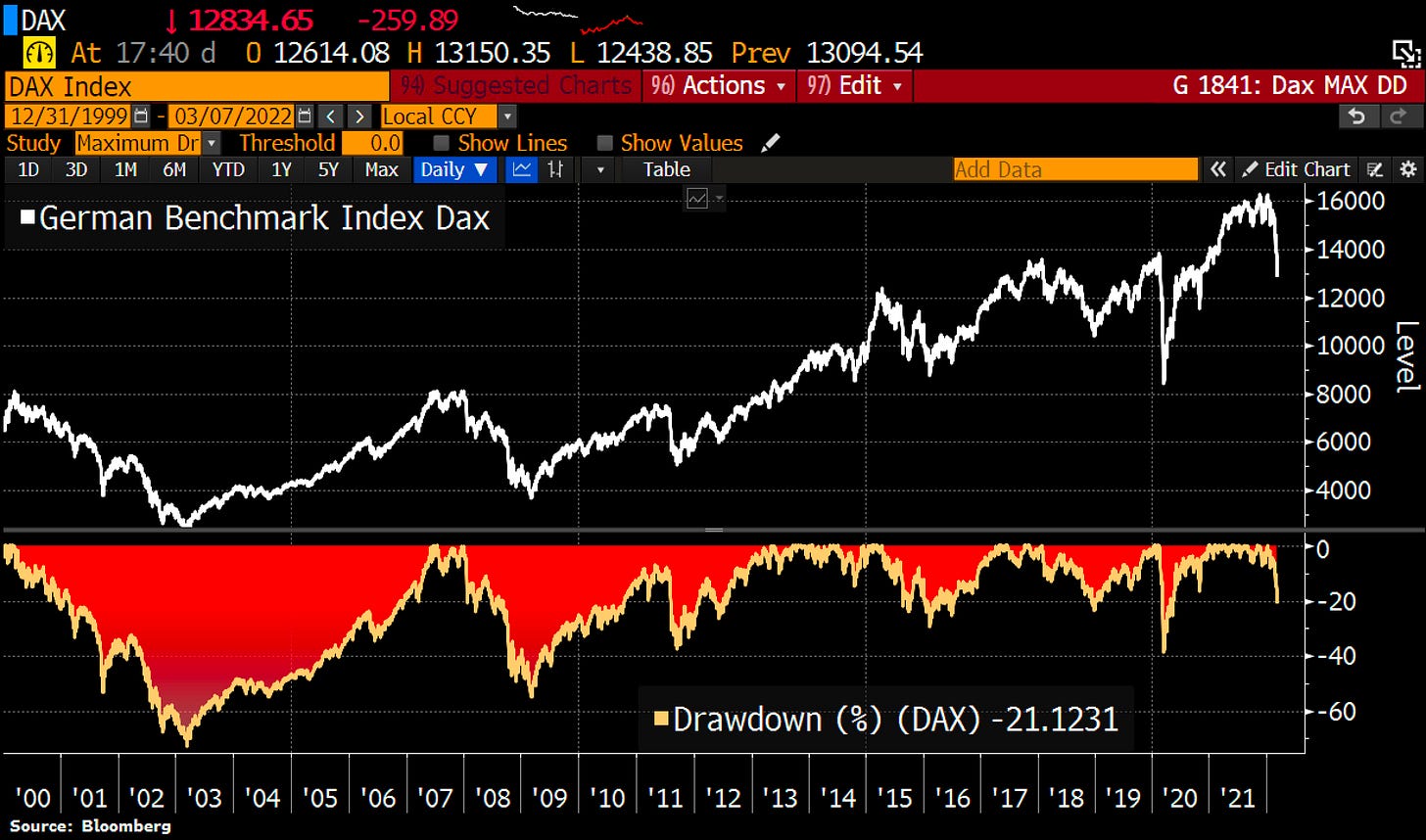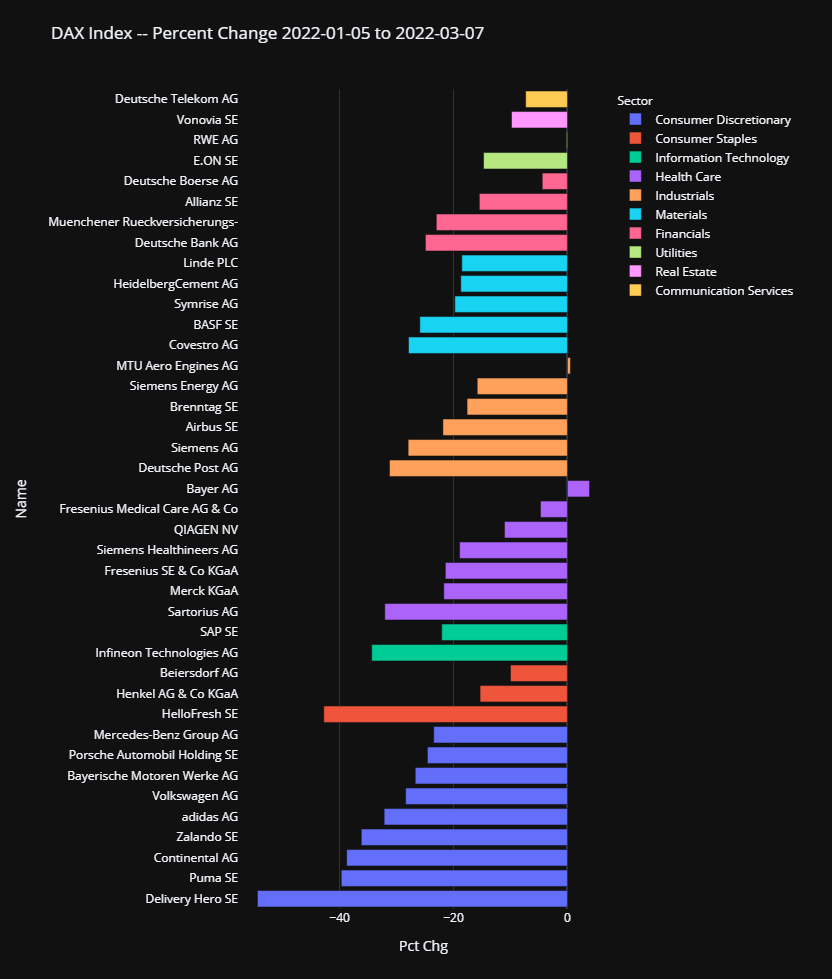The Kangaroo Market
Traders has been directed toward extreme levels, and this usually coincides with moments of panic and greed in the markets
If history is a guide, past geopolitical conflicts have almost always ended up being a buying opportunity, with markets offering positive returns over a 3-6 month period, despite fact that the future outlook is extremely variable and all options are on the table. The path of sanctions taken by entire Western world means that Russia is now the most sanctioned country in the world (see chart). Reactions of condemnation have been unanimous, but what is the price that Europe and its citizens will pay? Very high, especially for the middle class (low).
Meanwhile, European Central Bank yesterday announced that «EU is considering a large joint bond sale to finance energy and defense». Will this be the new Whatever it Takes a new buying opportunity?
Ukraine is the fourth largest exporter of agricultural goods, a major player in wheat, corn, barley, sunflower seeds and sunflower oil. A good chunk of Africa and Middle East depends on Ukrainian grains. Other sources in Argentina and Brazil are blocked by drought — barges can't reach the rivers to move grain. And in the US and Canada, massive traffic jams at ports have made it extremely difficult for exporters to get their grain offshore. So we could have serious problems getting food where it needs to go, because conflict in Ukraine has clogged up jobs everywhere. The shift that was already underway in looking for renewable or at least clean sources has only exacerbated this environment: result is that we are now operating in a just-in-time shipping model, with little spare capacity and constantly moving containers have to keep moving to be filled with products on rigid schedules, a kind of global logistics ballet. Covid, and then crisis in Ukraine, is a problem for shipping because of this deeply fragile system that relies on a small number of deepwater ports, relatively small number of giant ships, and three major alliances of ocean carriers.
Main topics covered in this issue:
The Master cycles have brought us this far
German index macro framework and scenarios
Master Time Cycle levels for this week on the DAX
Se la storia è una guida, i conflitti geopolitici del passato hanno quasi sempre finito per essere un'opportunità di acquisto, con i mercati che offrono rendimenti positivi su un periodo di 3-6 mesi, nonostante la prospettiva futura sia estremamente variabile e tutte le opzioni sono sul tavolo. La strada delle sanzioni intrapresa da tutto il mondo occidentale fa sì che oggi la Russia sia il paese più sanzionato al mondo (vedi grafico). Le reazioni di condanna sono state unanimi ma qual è il prezzo che pagherà l’Europa e i cittadini? Molto alto, soprattutto per la classe media (bassa).
Intanto la Banca Centrale Europea ieri ha annunciato che «UE stia pensando a una grande vendita congiunta di obbligazioni per finanziare l'energia e la difesa». Sarà il nuovo Whatever it takes e una nuova opportunità di acquisto?
L'Ucraina è il quarto più grande esportatore di beni agricoli, un attore importante in grano, mais, orzo, semi di girasole e olio di girasole. Una buona fetta dell'Africa e del Medio Oriente dipende dai cereali ucraini. Altre fonti in Argentina e Brasile sono bloccate dalla siccità — le chiatte non possono raggiungere i fiumi per spostare il grano. E negli Stati Uniti e in Canada, i massicci ingorghi nei porti hanno reso estremamente difficile per gli esportatori portare i loro cereali al largo. Quindi potremmo avere seri problemi a portare il cibo dove deve andare, perché il conflitto in Ucraina ha intasato i lavori ovunque. Il cambiamento che già era in atto nel cercare fonti rinnovabili o quantomeno pulite non ha fatto che aggravare questo contesto: il risultato è che ora operiamo in un modello di spedizione just-in-time, con poca capacità di riserva e container in costante circolazione che devono continuare a muoversi per essere riempiti di prodotti secondo programmi rigidi, una sorta di balletto della logistica globale. Il Covid, e poi la crisi in Ucraina, è un problema per lo shipping a causa di questo sistema profondamente fragile che si basa su un piccolo numero di porti in acque profonde, un numero relativamente piccolo di navi giganti, e tre grandi alleanze di vettori oceanici.
Principali argomenti trattati in questo numero:
I cicli Superiori che ci hanno portato fin qui
Quadro macro dell’indice tedesco e scenari
Livelli Master Time Cycle per questa settimana sul DAX
The Master cycles have brought us this far
Cyclical pattern we study is useful in understanding where are headed and when can catch significant changes in the trend. What is certain is that we will never know exact price but can predict time. Within our letters to subscribers, clients and friends of Dax Trading Ideas we have already revealed several times that 2022 would be a really intense year, with wide swings and sudden changes of scenario, a trader's year. We certainly could not foresee a totally unexpected conflict: however, economic conjunctures often occur at times of strong social depressions. The three-year period 2020-2022 has indelibly marked our lives and markets have also been affected by external influences. The psychological mass of traders has been directed towards extreme levels and this usually coincides with moments of panic and greed in the markets; external influences, no matter how much each person feels master of their own destiny, affect us. This is where we are within higher cycles:
I cicli superiori che ci hanno portato fin qui
Il modello ciclico che studiamo è utile per capire dove siamo diretti e quando possiamo catturare cambiamenti significativi del trend. Quello che è certo è che non sapremo mai il prezzo esatto ma possiamo predire il tempo. All’interno delle nostre lettere ai sottoscrittori, clienti e amici di Dax Trading Ideas abbiamo già rivelato più volte che il 2022 sarebbe stato un anno davvero intenso, con oscillazioni ampie e cambi di scenario repentini, un anno da trader. Non potevamo certo prevedere un conflitto totalmente inaspettato: spesso però le congiunture economiche avvengono in momenti di forti depressioni sociali. Il triennio 2020-2022 ha segnato le nostre vite in maniera indelebile e anche i mercati hanno subito le influenze esterne. La massa psicologica degli operatori è stata indirizzata verso livelli estremi e questo solitamente coincide con momenti di panico e di avidità sui mercati; le influenze esterne, per quanto ogni persona si senta padrona del proprio destino, ci condizionano. Ecco dove siamo all’interno di cicli superiori (grafico sopra).
Macro picture of German index and scenarios
Since beginning of the week, DAX index has officially entered in Bear Market, according to the classic parameters of economics textbook: -20%. Previous drawdowns in the history of index over last 20 years highlight the fact that economic situation, if it consolidates and becomes stagflation, could cause Germany to slide well beyond these percentages. Just think, only two crises of the new millennium (2002 and 2008) led to losses of between 50 and 60%. New expansionist policies of central banks (remember Mario Draghi's Whatever it Takes?) with Quantitative Easing cushioned the loss and allowed entire economies to be financed with free money.
The widening of sovereign debts has particularly damaged those countries already in difficulty, while it has supported others - such as Germany, which has applied the policy defined as Black Zero (reduction or non-increase of debt) - have achieved incredible performances and attracted investments from all over the world. The 10-year German Bund has always been in negative territory in terms of yields and this has meant that flow has been directed entirely towards equities.
The composition of DAX40 in 2022 highlights which ones have been hardest hit by the economic downturn and onset of the Russian-Ukrainian conflict. Delivery Hero and HelloFresh, both active in food service and home delivery sector, suffered biggest losses over 40%. Recall also these were two stocks that recently entered during transformation of the index from 30 to 40 companies. They are followed by the apparel sector with Puma, Zalando and Adidas and entire auto sector, which is down 30%. In the chart you will find all the stocks with their respective percentages.
Quadro macro dell’indice tedesco e scenari
L’indice DAX da inizio settimana è ufficialmente entrato in Bear Market, in base ai parametri classici da libro di economia: -20%. I precedenti drawdown della storia dell’indice degli ultimi 20 anni mettono in risalto il fatto che la congiuntura economica, qualora consolidi e diventi stagflazione, potrebbe far scivolare la Germania ben oltre queste percentuali. Basti pensare solo le due crisi del nuovo millennio (2002 e 2008) hanno comportato delle perdite tra il 50 e il 60%. Le nuove politiche espansionistiche delle banche centrali (ricordi il Whatever it Takes di Mario Draghi?) con il Quantitative Easing, ha attutito la perdita ed ha consentito ad intere economie di essere finanziate con denaro gratis.
L’allargamento dei debiti sovrani ha danneggiato in particolare quei paesi già in difficoltà mentre ha sostenuto altri — come la Germania che ha applicato la politica definita Black Zero (diminuzione o non incremento del debito) — hanno messo a segno performance incredibili e attratto investimenti da tutto il mondo. Il Bund tedesco a 10 anni è stato sempre in territorio negativo in termini di rendimenti e questo ha fatto sì che il flusso si dirigesse interamente verso l’azionario.
La composizione dei 40 titoli dell’indice DAX nel 2022 mette in risalto quali sono stati quelli più colpiti dalla contrazione economica e dall’inizio del conflitto Russo-Ucraino. Delivery Hero e HelloFresh, entrambi attivi nel settore ristorazione e consegne a domicilio, ha subito le perdite maggiori oltre il 40%. Ricordiamo inoltre che questi sono stati due titoli che sono entrati recentemente durante la trasformazione dell’indice da 30 a 40 aziende. Seguono il settore abbigliamento con Puma, Zalando e Adidas e tutto il comparto auto, che è in perdita del 30%. Nel grafico trovi tutti i titoli con le rispettive percentuali.






Milito, un professonista